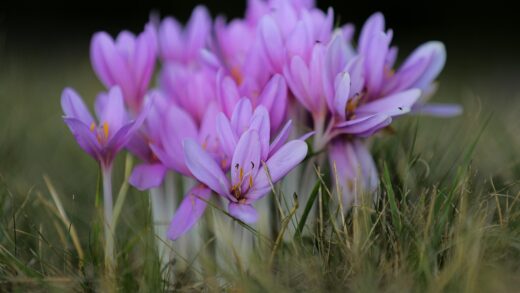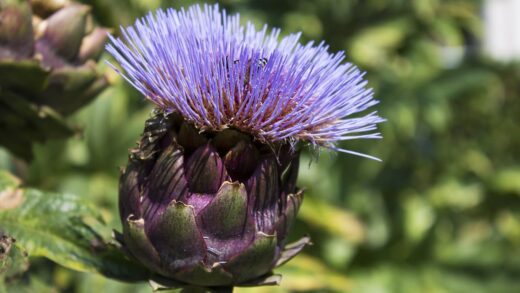The moth orchid, or Phalaenopsis, is one of the most popular houseplants worldwide, which is no wonder, as it rewards its caretaker with beautiful, long-lasting blooms. However, to keep our plant healthy and vibrant, it is essential to know its most common diseases and pests, as well as the methods of controlling them. Proper care, prevention, and quick intervention are key to avoiding and managing problems. In this article, we will detail the pathogens and pests that can pose a threat to these wonderful plants and provide orchid lovers with practical advice for effective protection.
Prevention is always simpler and more cost-effective than curing an already established problem. The foundation of a healthy moth orchid is providing the right growing conditions, which includes optimal light, correct watering technique, adequate humidity, and regular nutrient replenishment. It is always wise to quarantine newly purchased plants for a few weeks to ensure we are not bringing in hidden pests or diseases with them. Regular, thorough inspection is also essential, as problems identified in the early stages are much easier to treat. Pay attention to the condition of the leaves, aerial roots, and flowers, and act immediately at the slightest sign of change.
In caring for Phalaenopsis orchids, we often make mistakes that can directly or indirectly lead to diseases. Overwatering is one of the most common problems, leading to root rot and, consequently, the death of the plant. It is important to let the medium dry out almost completely between waterings. Inadequate ventilation, too high or too low humidity, and sudden temperature changes also cause stress to the plant, making it more susceptible to pathogens. We must also be careful with fertilization, as excessive nutrient intake can damage the roots and leaves.
Maintaining general hygiene is also crucial in disease prevention. Regularly remove withered leaves, cut flower stalks, and fallen flowers, as these can provide a breeding ground for fungi and other pathogens. Always use sterile, high-quality orchid potting mix and a clean pot for repotting. Disinfect tools used for pruning, such as scissors or knives, with alcohol or a flame after each plant to prevent the transmission of infections from one plant to another. By following these basic rules, we can significantly reduce the risk of diseases.
Fungal and bacterial diseases
Moth orchids can be attacked by numerous fungal and bacterial diseases, which are often the result of improper care conditions. One of the most common problems is root rot, mostly caused by overwatering and a poorly ventilated potting medium. The roots turn brown, become mushy, and the plant’s leaves become limp and yellow. To prevent this, it is essential to follow a correct watering schedule and use a well-draining orchid mix. If the problem has already developed, the plant must be removed from the pot, the rotten root parts must be cut off with sterile scissors, and the cut surfaces should be treated with charcoal powder or a fungicide before placing it in fresh potting medium.
More articles on this topic
Leaf spot fungi are also common, especially in high humidity and poor air circulation. Spots of various sizes and colors – yellow, brown, or black – appear on the leaves, which can grow over time and lead to leaf death. To prevent infection, avoid wetting the leaves, especially in the evening, and ensure adequate air movement around the plants. Remove the infected leaves and treat the plant with a suitable fungicide. Copper or sulfur-based products can also be effective in prevention.
Bacterial soft rot is an extremely rapid and dangerous disease caused by the Erwinia bacterium. At the site of infection, the leaves become watery and translucent, then rot with an unpleasant odor. The disease is highly contagious and can destroy the entire plant in a short time. The infected plant part must be removed immediately along with a healthy section, and the cut surface must be disinfected. In severe cases, saving the plant is almost impossible, so the greatest emphasis must be on prevention: avoid mechanical injuries and excessive moisture on the leaves.
Fusarium wilt is another fungal disease that attacks the plant’s vascular tissues, blocking the transport of water and nutrients. The symptoms begin with yellowing and wilting of the leaves, eventually leading to the death of the entire plant. The disease infects through the roots and is often not noticed until it is in an advanced stage. Since it spreads within the vascular tissues, external treatment is ineffective. To prevent it, always use sterile potting medium and avoid stressing the plant. Unfortunately, an infected plant usually has to be discarded to prevent the infection of other plants.
The most common animal pests
Moth orchids are threatened not only by diseases but also by various animal pests that feed on the plant’s sap, weakening it and opening the way for secondary infections. One of the most common and annoying pests is the mealybug, which forms small, white, cotton-like colonies on the undersides of leaves, in the leaf axils, and on the roots. Their feeding causes the leaves to yellow and deform, and the plant’s growth slows down. The pests also excrete honeydew, on which sooty mold can develop. As a first step in control, remove visible bugs with a cotton swab dipped in alcohol, then apply a systemic insecticide mixed with the irrigation water.
More articles on this topic
Scale insects are also frequent visitors on orchids. These pests protect themselves with a small, shield-like covering, which makes them difficult to control. They settle on the leaves and stems, weakening the plant by sucking its sap. Signs of infestation include yellow spots on the leaves and sticky honeydew. Control is similar to that for mealybugs: try to scrub off the scales with a soft brush or your fingernail, then use an oil-based spray or a systemic insecticide. Regular inspection is important because new generations can hatch from eggs hidden under the scales.
Spider mites prefer dry, warm air, so they pose a particular threat to orchids kept indoors during the heating season. These tiny, spider-like creatures live on the underside of the leaves and create a fine web. Their feeding causes tiny, yellowish-white dots to appear on the leaves, and the leaf surface takes on a silvery sheen. In severe infestations, the leaves dry up and fall off. To prevent this, increase the humidity around the plant, for example, by regular misting or using a humidifier. Shower the infested plant and use a special miticide (acaricide).
Thrips are small, winged insects that also cause damage by sucking plant sap. Their presence is indicated by silvery, shiny spots on the leaves and flowers, as well as tiny, black specks of excrement. The flowers may become distorted, and the buds may dry up without opening. Thrips are extremely mobile and reproduce quickly, so control should be started as soon as possible. Isolate the infested plant and use a systemic insecticide against them. Placing blue sticky traps can help to reduce the adult population and detect the infestation early.
Physiological problems and care errors
Not all abnormalities are caused by pathogens or pests; often, improper growing conditions or care errors lead to physiological problems in moth orchids. One of the most common phenomena is leaf yellowing, which can have many causes. The yellowing of lower, older leaves due to natural aging is a normal process. However, if multiple leaves, especially younger ones, turn yellow, it may indicate overwatering, nutrient deficiency (especially nitrogen), or over-fertilization, which burns the roots. It is important to accurately identify the cause for proper correction.
Wrinkled and limp leaves are also a common problem, usually indicating a disturbance in the water balance. Paradoxically, this can be caused by both overwatering and dehydration. In the case of overwatering, the roots rot and are unable to absorb more water, so the plant is thirsty. In the case of dehydration, there is simply not enough water in the medium. The solution is a thorough inspection of the root system. If the roots are healthy, green, or silvery, then more frequent watering is likely needed. However, if the roots are brown and mushy, you are dealing with root rot, which requires immediate intervention.
The dropping of flower buds, or bud blast, is an extremely frustrating phenomenon most often caused by a sudden change in the environment. Orchids are sensitive to being moved, temperature fluctuations, drafts, drastic changes in light conditions, or dry air. During the flowering period, it is particularly important to provide a stable, calm environment for the plant. Overwatering, dehydration, or the presence of pests can also lead to the loss of buds.
Sunburn is another common physiological problem that occurs when the moth orchid is exposed to too strong, direct sunlight, especially during the midday hours. At first, yellowish, then whitish, parchment-like spots appear on the leaves, which can later turn brown and dry out. Although moth orchids love bright places, they must be protected from direct sun. An east or west-facing windowsill is ideal for them, or a south-facing window where a curtain or another plant filters the light. The burnt part of the leaf will not regenerate, but if the plant is otherwise healthy, the damage is not fatal.




















